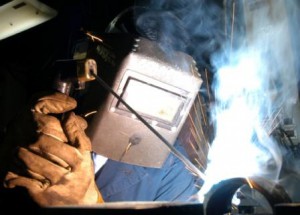A high risk bid to prompt many councils in New South Wales to merge, supposedly for their own future sustainability, will deliver long term savings of just $13.30 per person, per year, based on the economically buoyant state’s current population of 7.5 million people.
That’s the underwhelming bottom line of around $2 billion in savings and benefits that the Baird government has used as the headline number to try and sell its bid to create efficiencies in the state’s local government sector.
If there are more savings, the Baird government isn’t talking them up.
The $2 billion figure was reiterated on Tuesday at the release of the Independent Pricing and Regulatory Tribunal’s assessment of councils’ ‘Fit for the Future’ submissions which has assessed that almost two thirds of fall outside of the government’s guidelines for medium to long term sustainability.
Confusingly, the $2 billion figure on which the Baird government is hanging its promises is derived entirely from savings from merging Sydney councils, begging the question of what happened to the rest of the state when the savings and benefits were being tallied up.
While some councils clearly have much bigger financial headaches than others, the conspicuously small saving per head of population from the headline figure raises the clear question of what kind of value ratepayers will ultimately realise through what’s fast threatening to become a legal and political quagmire for its prosecutors.
Premier Baird was at pains on Tuesday to stress that the state government is taking on resistant and recalcitrant local governments in the interests of ratepayers. But it was still a dim light at the end of the tunnel.
“We want to say to councils across this state it’s time we put the ratepayers first,” Mr Baird said in his opening statement. “That’s what this process has been about.”
“There is a capacity to have savings that deliver for communities, in simple terms, better services, more infrastructure or lower rates or a combination of all of those. That is something we think is in the community’s interest and that is what we are fighting for.”
A major merger problem for Australia’s most expensive city, Sydney, (that’s the city not the council called the City) is that the amount of hip pocket relief (rates) or perceivable new investment (parks and libraries) that can flow from a $2 billion a merger process – forced or otherwise – will be next to negligible to those whom the savings are meant to flow given it’s stretched out over two decades.
To add some numerical context, Sydney’s hot and sweaty property market delivered NSW Treasurer Gladys Berejiklian a handsome $2.1 billion surplus in the last state Budget, largely thanks to a big bump in stamp duty receipts (that’s a state property tax) that rises and fall with property sales values.
Councils get a bit of a lift from the property boom thanks to land values increasing, but nothing like a property tax that gets a turbocharge effect because of increased turnover.
Of course there’s (big) political-self interest for council(llor)s who want to remain autonomous, after all, what kind of politician puts their hand up to sack themselves?
But the idea that just $100 million-a-year, spread between whatever number of local governments the Baird government eventually wants, doesn’t even come close to being an enticing number.
If the present 152 councils were whittled down to 100 — a reduction of a third — it would mean just $1 million a year per council . . . or Sydney’s median house price. Or a house per council.
And that’s assuming the money actually goes to councils.
Premier Baird and his Local Government Minister Paul Toole on Wednesday appeared to find themselves caught on the hop by questions as to where the $2 billion would ultimately go, a situation that could have produced some (previously approved) promises being made on the spot.
“I’ll give you this guarantee today. For reforms that do take place in NSW, we’ll guarantee for communities across this state that we’ll reduce red tape, we’ll reduce waste. We’ll also guarantee that the savings that are made can be passed on for more infrastructure, better services or to keep rates low,” Mr Toole said after being asked if the savings would be swept up into general revenue.
“The other guarantee is that we’ll ensure that local representation is maintained.”
That may be so, but solvent councils will be deeply suspicious of whether localised savings created by mergers will be directly reinvested in the area from where they are derived — that’s their area — or go into some sort of redistributive kitty or fund that doles out grants across the state.
In politics there’s no interest like self-interest, but at a local level that’s what representation is supposed to be about.






Leave a Reply